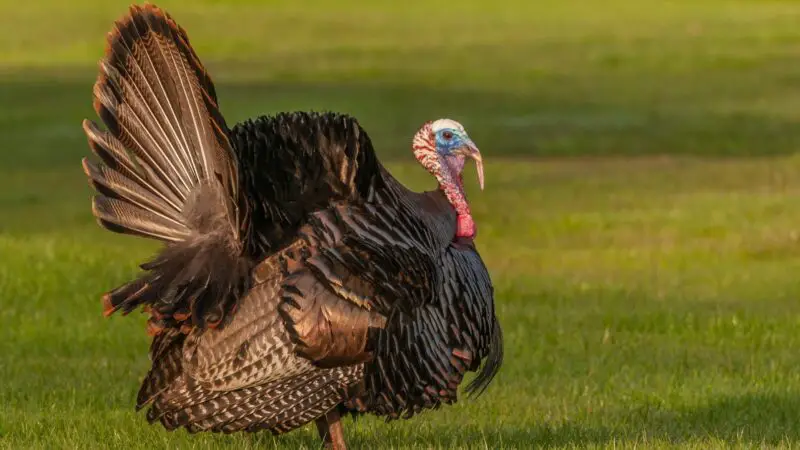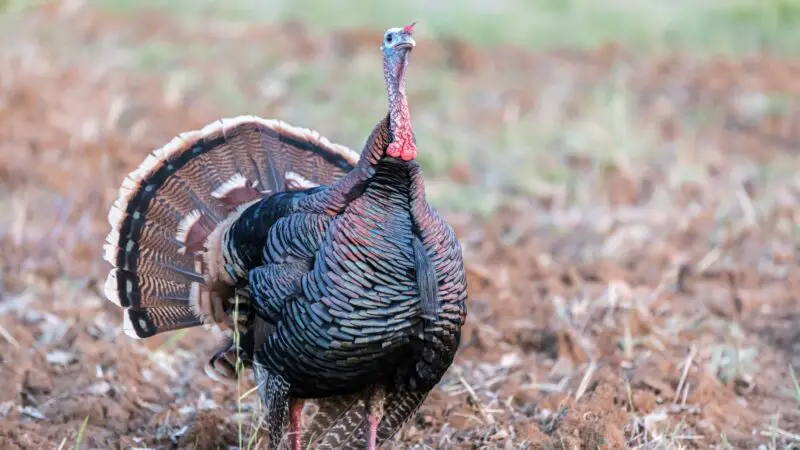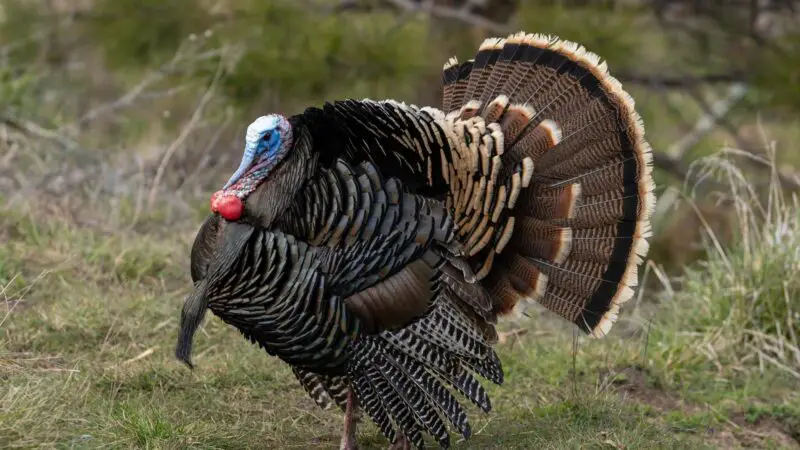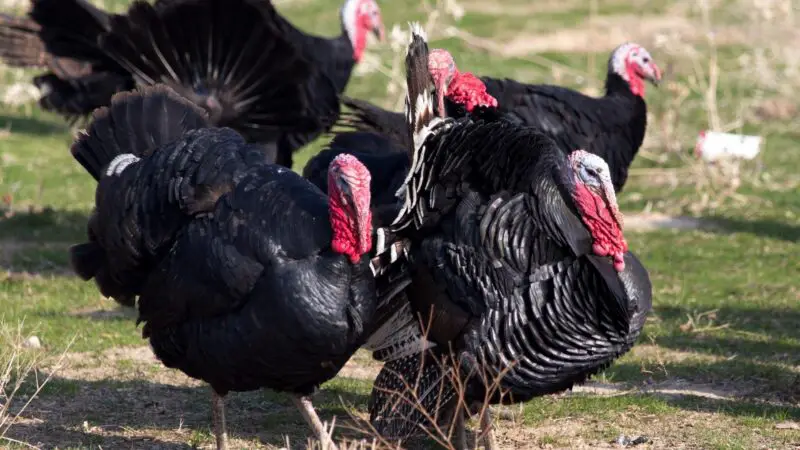Raising turkeys can be a fun and satisfying activity if you’re ready to internalize production costs, labor, and the amount of time you’re going to spend painstakingly caring for each bird. An important factor in successfully raising turkeys is housing.
Turkeys need to be placed in a considerable amount of space, specifically on well-drained land, with sturdy fencing and netting, flooring that’s reinforced with steel wire, equipment such as waterers, feeders, and proper insulators, and windows or vents for ventilation.
To know more about housing turkeys, the necessary space requirements, choosing the site, proofing the housing against predators, rearing systems, and other interesting and relevant information, read further this article!
Requirements for Raising Turkeys

1. Knowing Why You’re Raising Them
Turkeys are best raised for meat production since, accounting for costs, it is not economically wise to keep an egg-laying flock. However, heritage turkeys generally require more time to raise, which also increases costs compared to commercial-type turkeys, and they may also be relatively smaller in size.
2. Selecting a Variety
There are 8 varieties of heritage turkeys to choose from. Use the table below as a guide for comparison and uses:
| Breed | Male (avg. weight in pounds) | Female (avg. weight in pounds) | Eggs per Season | Uses |
| Beltsville Small White | 17 | 10 | 150 to 180 | Eggs and meat |
| Black | 23 | 14 | 40 to 65 | Meat |
| Bourbon Red | 23 | 14 | 50 to 100 | Eggs and meat |
| Bronze | 25 | 16 | 75 to 155 | Meat |
| Narragansett | 23 | 14 | 50 to 100 | Meat, ornamental |
| Royal Palm | 16 | 10 | 100 to 155 | Meat, ornamental, exhibition |
| Slate | 23 | 14 | 40 to 50 | Meat, exhibition |
| White Holland | 25 | 16 | Unknown* | Meat |
3. Considering How Much Space to Use
Turkeys need more outdoor space to develop in compared to chickens, specifically at least 25 square feet per bird. They need that much ranging area for them to forage for food such as grass, plant material, insects, frogs, small rodents, grit, and other organisms, as well as to keep their feathers clean and neat.
Rural spaces are the best choice as turkeys constantly make gobbling sounds, which may be a nuisance to neighbors when you place them in a residential area.
4. Placing Equipment and Facilities
A clean, sufficient water supply, usually a one-quart container for poults and a gallon-sized container as they grow is necessary to help achieve proper poult growth and health.
Do the same when choosing a feeder; a simple, small-sized container for poults and larger-sized feeders as they grow. Replace the containers as they grow in the next 4 to 5 months.
5. Feeding Turkeys the Appropriate Diet
Poults will quickly grow and become high-quality meat when fed with a balanced ration. A commercially-produced starter ration composed of 28% protein should be fed to poults from day 1 until 4 weeks of age.
As they grow, you can continue feeding them with a crumble ration or try using a pellet ration, both consisting of 26% protein for the next 2 weeks. Then, you can reduce the protein in their diet by 1% to 2% every 2 weeks for the following months.
The final ratio should not be lower than 16% protein. Supplement their diets with whole or cracked corn, grass or alfalfa, and grit during the final weeks of their diet.
You can also feed them with organic feed if you want your birds to appeal to the organic poultry niche market. Usually, it will take 2.5 pounds of organic feed per pound of turkey growth.
6. Managing the Health of Your Turkeys
Regularly test your turkeys and eliminate carriers of diseases by observing proper sanitation of your houses and foraging areas. If you’re raising other poultry, separate turkeys from them to reduce the risk of diseases.
If even one member of your flock becomes sick, contact your local veterinarian or experienced poultry growers for help.
Can You Keep Turkeys Indoors?
You can keep turkeys indoors, but it is not recommended. Young turkeys will require 4 to 6 square feet of space per bird while adults will require 12 to 16 square feet each.
Hence, an 8″ x 12″ building can only fit 5 to 6 large turkeys. Unless you have a large indoor space suitable for turkeys or you’re able to build multiple houses, outdoor housing is still a better housing option.
Furthermore, indoor flooring should be cleanable and easily maintained to prevent the emergence of parasites and lessen the risk of the turkeys catching diseases. They would also have to go outdoors anyway as they need an open space for foraging.
Choosing the Site

Choose land that is well-drained and, if possible, near the market for easy transportation of meat and/or eggs. Sandy soil is preferable compared to clay soil since it will be easier to keep dry, clean, and, consequently, free from disease.
Housing can be placed on flat land or in a rolling-hill topography, which means that they should be placed either on the side of high hills or top of low-lying hills. When placing on low-lying hills, make sure the area is well-drained and not prone to flooding.
Predator-Proofing | How Do You Protect Turkeys From Predators?
Construct sturdy fencing and netting to protect your birds from predators, and constantly repair and seal any holes and other entry points that can increase the chances of predators coming in contact with your flock. Depending on local animal regulations, you can also put up traps and bird spikes.
You can also consider purchasing motion sensor lights and sound-sensitive equipment to detect any potential predators in the area.
However, the most effective method, aside from fencing and netting, is to remove any food attractants, such as excess livestock feed, garbage, fallen fruit from trees, and other available food items that can attract predators.
Flooring Suggestions for Your Turkey House

Considering the ease of cleaning, sanitation, and labor requirements, concrete flooring is ideal for turkey brooder houses, preferably about 3 to 4 inches thick and layered with steel wire as reinforcements.
However, this option is quite expensive, and most turkey growers avoid using concrete. A good alternative flooring material is asphalt, as it is less expensive.
If you already have a pre-constructed building or spare room in a garage or barn, you can utilize that and make the necessary re-arrangements. Simply incorporate steel wire on the bottom of its flooring to reduce the risk of diseases.
Housing for Breeding Turkeys
Housing Dimensions and Design
Successful confinement rearing and brooder houses are usually 30 to 40 feet wide and are usually manually ventilated since a wider space means increased chances of the accumulation of moisture and ammonia.
The housing can extend as much distance as necessary to accommodate your flock size. You can have 5,000 hens or toms in the housing, provided that they each have 3 square feet and 5 square feet of floor space, respectively.
Rearing Turkey Systems
There are 3 systems used to rear turkeys based on housing design. Here are the guidelines for each:
1. Range
- Land: Soil should be well-drained and preferably the sandy type. Allow only 1 acre per 250 turkeys annually and rotate the land to allow a year of rest. Plant native grasses, clover or alfalfa, and green feed such as oats, sorghum, barley, or wheat.
- Shelter/Shed: Allow a square foot of area per turkey. The house should have low, accessible sides with panels that are resilient against harsh weather conditions, particularly against storms.
- Fencing: Fence tightly around the area of the range to reduce the chances of predators going inside the turkey perimeters. An electric fence is highly desirable.
- Equipment: Waterers should be placed on top of wire-covered platforms to reduce water spillage. There should be sufficient and steady supply of water, especially during the summer season.
2. Semi-confinement
- Land: Well-drained soil, preferably sandy but it is not required. Arrange the houses to allow a 50-inch buffer zone between them and install a frostproof water line around each. Each turkey should have 20 square feet of space and only 2,500 to 3,000 turkeys should live inside one house. Plant green crops such as barley or oats.
- Shelter/Shed: Each turkey should have 1.5 square feet of housing area. The roof should be built with a gable design and continuous ridge ventilation. There should be a 4-inch deep litter available in the house
- Fencing: Tightly fence the area, preferably with electric fencing. The turkeys should be semi-confined in a ped width of up to 150 feet only so that they will be close to feeders, waterers, and the shed.
- Equipment: Mount waterers on platforms that are covered with welded wire to reduce water spillage. Move feeders and waterers if necessary during the rearing period. Any manure or litter should be disposed of.
3. Confinement
- Land: No soil specifications other than it has to be well-drained and as long as the land is sufficient enough to allow the construction of houses and a 100-foot buffer zone between each building. Install frostproof water lines to and around each house.
- Shelter/Shed: Provide 4 square feet of area per hen and 5 square feet per tom. The shed width should be limited to 40 feet and designed with a gable roof with continuous ridge ventilation. The side walls should be at least 4 feet tall and built to withstand heat and cold.
- Fencing: The entire shed should be enclosed with 1 to 2 inches of wire. There should also be available plastic curtains or panels to close off the walls in case of storms.
- Equipment: Install waterers and feeders either within or on the sides of the building. They should be close enough to the exterior walls to reduce flooding. You can opt to have a specialized valve installed.
Materials, Insulation, and Housing Parts
- You can use wood-frame, wood-pole, steel-frame, steel-pole, masonry-block construction, or well-insulated concrete blocks depending upon your convenience and budget.
- For the roof and ceiling, galvanized and corrugated steel is the most durable option. Make sure it is also insulated to maintain house temperature and warm incoming air.
- For the sidewalls, any building material can be used as long as they have great insulating value, such as wood, aluminum, glass, steel, plastics, fiberglass, and concrete block.
Ventilation
You can choose between natural ventilation, which means creating enough windows and vents in your house, and mechanical ventilation, by using a pressurized system or exhaust. Vapor barriers and properly thermostated fans should also be installed.
Rearing Equipment for Breeding Turkeys
- Feeders. They should be constructed with heavy material that is resistant to harsh weather conditions, as well as wearing and tearing. Ideally, they should be designed with vertical sides so that food will drop down easily onto the birds’ waiting mouths. Build them on top of strong kids and allow a trough depth of 5 to 7 inches is preferred, to reduce feed wastage.
- Waterers. They should also be constructed with heavy and durable material but can still be easy to adjust on rolling land and hills. The edges should be smoothed down or rolled to prevent injuries to your turkeys. There is no specific trough depth required but make sure it is deep enough so that there will be no water wastage.
- Other Equipment. This includes a manure spreader, trailer, or bulk feed truck. It depends on your budget and your perceived level of necessity.
Summer Considerations in Building a Turkey House

Turkey houses should be well-ventilated to allow fresh air to come through the living space. Vents or windows should be placed on one side of the house for small coops, but make sure they don’t open directly toward the birds themselves to prevent frequent drafts. For bigger coops, place more vents or windows accordingly.
There should also be proper insulating equipment and vapor barriers installed to reduce the amount of moisture and ammonia accumulation on the ceiling and walls. Moreover, place the turkey house under an adequate amount of shade without completely obscuring sunlight.
As the birds experience heat stress during the summer season, they will inevitably increase their water intake by 2 to 4 times, which means you have to regularly check and maintain waterers, flush water lines, and make sure the turkeys have constant access to clean water.
Consider purchasing energy-efficient fans to help circulate air uniformly throughout the entire house. For this reason, avoid constructing houses with tall ceilings to prevent the formation of temperature layers. Make sure you maintain the fans by cleaning them and lubricating pivot joints and motors. You should also have a replacement fan motor in case of any damage.
Winter Considerations in Building a Turkey House
Install a heating system, such as a tube heater, jet brooder, infrared brooder, or space heater, and make sure it is fully functional before the winter season comes. Regularly check for any gas leaks, as well as clean the heater for optimum performance.
Use a time clock with a built-in thermostat to help discern and regulate the temperature during winter. Knowing if it is too cold for your turkeys will prompt you to turn off your fans.
There should also be a vapor barrier and proper insulating equipment installed to help remove the accumulation of moisture and ammonia on the walls and ceiling.
References
Bulletin #2187, Poultry Facts: Turkey Brooding and Management: Giving Poults a Good Start
